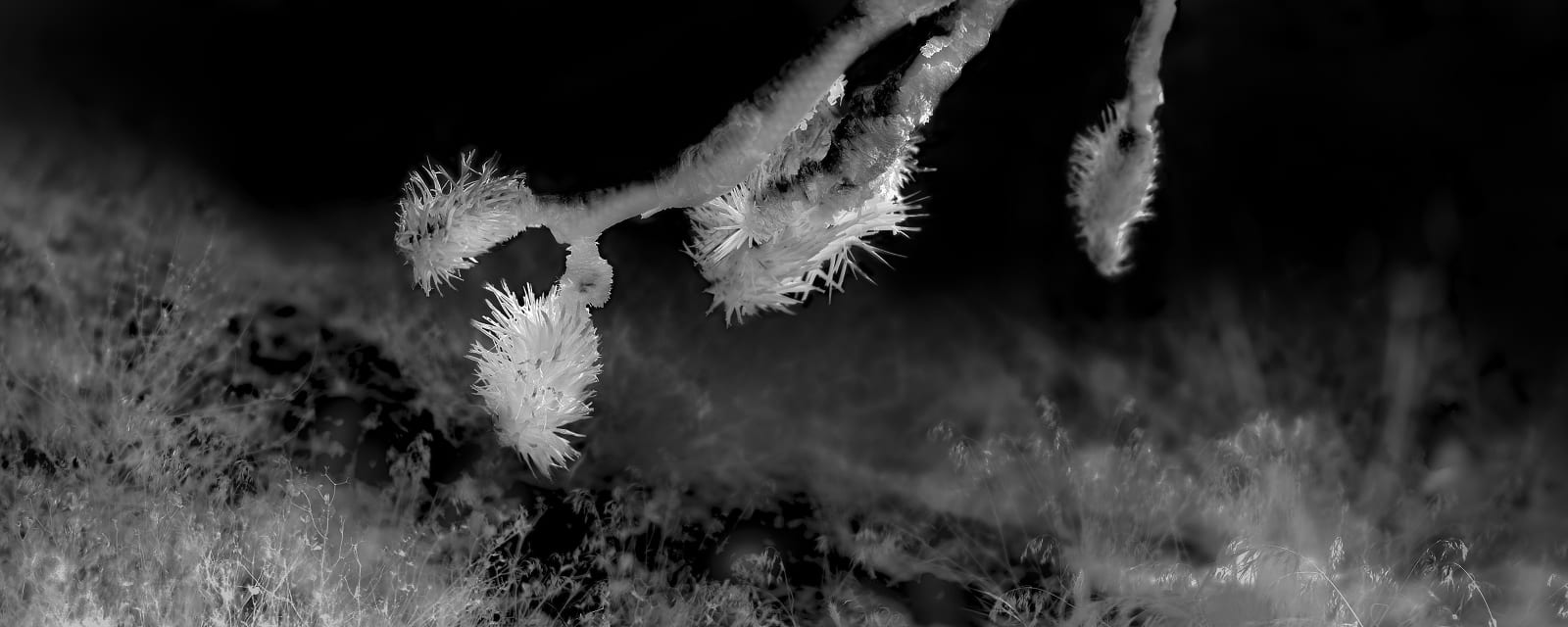Alex Turner American, b. 1984
Burned Joshua Tree with Dried Invasive Grasses, Estimated 100 Years Old, Dome Fire Site, San Bernardino County, CA, 2024
Gelatin silver print mounted to museum board
8 x 20 in.
Invasive grasses like red brome and cheatgrass have increased fire frequency in the Mojave, creating fuel beds that allow flames to spread rapidly. Joshua trees, which aren’t adapted to frequent...
Invasive grasses like red brome and cheatgrass have increased fire frequency in the Mojave, creating fuel beds that allow flames to spread rapidly. Joshua trees, which aren’t adapted to frequent fire, are often killed, and seedlings struggle to regenerate—threatening the species’ long-term survival.
About the series:
Blind Forest is a cross-disciplinary study of how trees absorb and reflect human and environmental histories. Created in collaboration with ecologists, historians, and anthropologists, the project explores their capacity to reveal shifting climates, cultural values, and systems of power over time. Set across California, Blind Forest employs thermal imaging—commonly used in surveillance, fire detection, and tree health assessment—to visualize the conservation, transmission, and dispersion of heat. Each large-scale image is composed from hundreds of thermal exposures, treating heat as both data and narrative: a high-fidelity record of vitality, stress, and decay.
The trees featured here trace enduring tensions between extraction and preservation, survival and erasure, change and continuity. They are both ecological keystones and mirrors of human intent. In this precarious moment, Blind Forest invites us to consider trees not as passive scenery, but as active participants—living archives that conserve, transmit, and disperse meaning across generations.
About the series:
Blind Forest is a cross-disciplinary study of how trees absorb and reflect human and environmental histories. Created in collaboration with ecologists, historians, and anthropologists, the project explores their capacity to reveal shifting climates, cultural values, and systems of power over time. Set across California, Blind Forest employs thermal imaging—commonly used in surveillance, fire detection, and tree health assessment—to visualize the conservation, transmission, and dispersion of heat. Each large-scale image is composed from hundreds of thermal exposures, treating heat as both data and narrative: a high-fidelity record of vitality, stress, and decay.
The trees featured here trace enduring tensions between extraction and preservation, survival and erasure, change and continuity. They are both ecological keystones and mirrors of human intent. In this precarious moment, Blind Forest invites us to consider trees not as passive scenery, but as active participants—living archives that conserve, transmit, and disperse meaning across generations.

